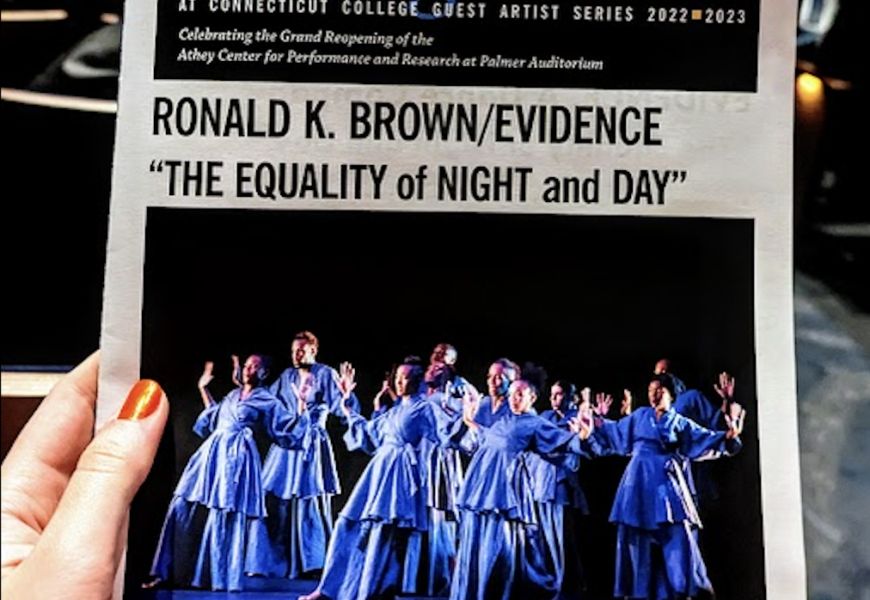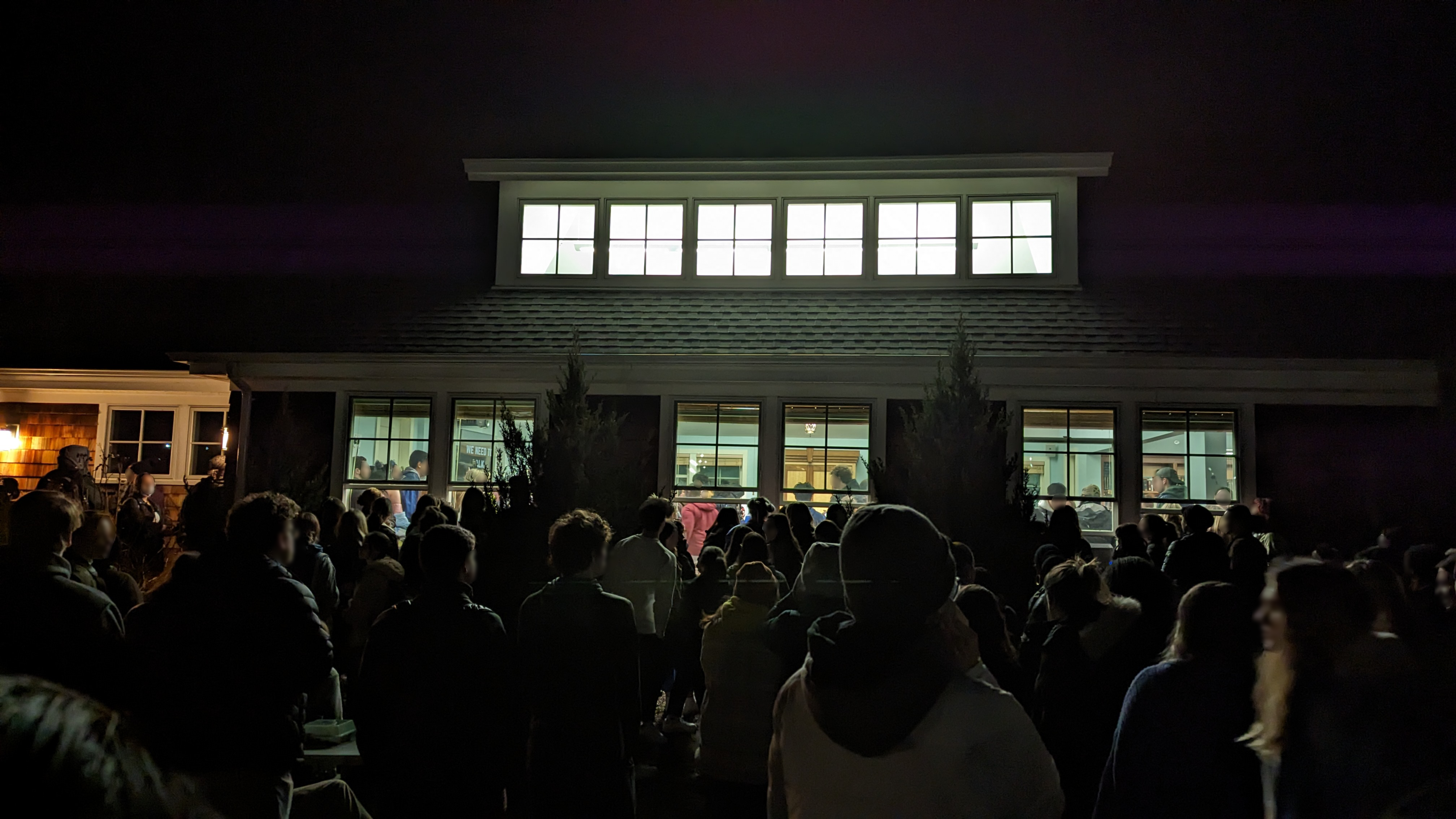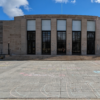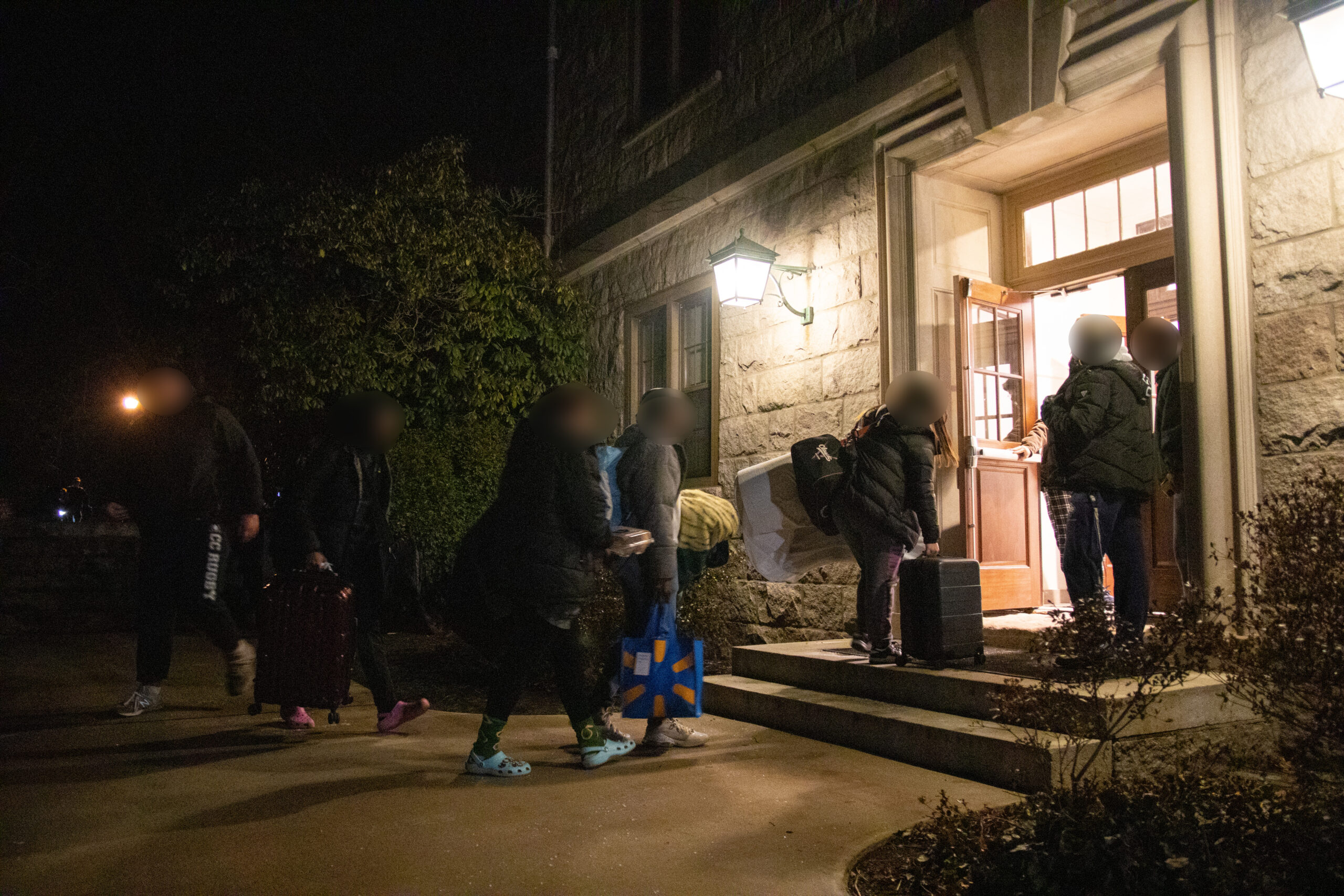For the first time since 2002, Ronald K. Brown’s EVIDENCE dance company returned to Palmer Auditorium on Feb. 10 as part of Conn’s OnStage performance series. Presenting “The Equality of Night and Day,” the program notes how Brown — founder, artistic director, and award-winning choreographer — “seeks to break open the truth in a world wrought with exploitation, racism, and xenophobia.” The evening featured the titular dance along with “Open Door” and “Grace,” which were all performed during a successful run at The Joyce Theater in New York City.
The evening began with “Open Door,” a joyous arrangement with an Afro-Latin flair. The musical score included an evocative, gentle piano solo, groovy jazz, and an excerpt from “Afro Latin Jazz Suite” to build layers of rhythm, auditory texture, and an infectiously jovial mood. Multicolored chiffon skirts emphasized the dancers’ swishing legs and polyrhythmic, full-body undulations. The nine dancers exchanged movements and smiles equally, repeating the same choreography but infusing their individuality into each phrase. One such moment was a sequence they each performed as smoothly as silk, whipping their legs around on the floor to a seated position then rapidly pulling their legs back to lie flat on their stomach for a luxurious second of stillness. These instants of pause were breathtaking in contrast to the Afro-Latin energy, with seemingly effortless shoulder shimmies and precise, buoyant footwork. The lighting design complemented this nonchalant athleticism with soft washes of warm tones, from a sunny orange sidelight to a shocking pink to a fiery red that matched two of the dancers’ costumes.
One of Brown’s newest works, “The Equality of Night and Day (TEND),” followed, comparatively more somber in tone. The dance “[examines] the concepts of balance, equity, and fairness in light of the conflicting present-day issues that young people, women, and people of color now face” according to the company website. Dressed in flowing, wide-legged blue pants and matching fluid wrap tops on a dimly lit stage, the artists first danced to the voice of Angela Davis criticizing the treatment and conditions of Black people in America. Fabric banners hung downstage, covering the top third of the stage with projections of protest photos collaged throughout the piece. The narrower aspect ratio both focused attention on the intricate choreography and also reflected the content of Davis’s speech, which referenced the approximately one-third of Black men who will be imprisoned in their lifetime.
Some of the most powerful images were Brown’s repeated use of circles. Dancers embodied the feeling of frustration that comes with a lack of progress by stepping together slowly around the dimly lit stage. The piece culminated with soloist Demetrius Burns stripping off his shirt, carrying it like a limp body, and gently placing it in the center of the circle. One by one, his fellow artists followed suit, removing their tops, carrying them around the circle, then gingerly piling them on top of Burns’s. They then broke the cycle of walking and gathered upstage in the corner, supporting each other with hands on shoulders and unity as an ensemble.
Excerpts from Davis’s impassioned speeches punctuated Jason Moran’s dynamic piano score throughout the dance. Touching on subjects such as political protest for racial equity, injustice in the prison systems, institutional inequity, homophobia, capitalism, and gender inequality, Davis’s words reflected the current charged atmosphere both on campus and in the country. As students, faculty, and staff protest the College administration and President Bergeron for their blatant apathy in regard to their so-called diversity, equity, and inclusion goals, “The Equality of Night and Day” channeled long-term, ongoing frustrations in a powerful, reflective, and evocative performance.
The final piece of the evening’s performance was titled “Grace.” Originally choreographed for the Alvin Ailey American Dance Theater in 1999, this bright high-energy piece incorporated Modern and West African movement vocabularies to achieve a powerful yet airy quality. The project felt like a celebration of joy, music, and movement, as the dancers embraced community through joyful group and individual movement. The dancers were often oriented towards each other which helped to build a sense of community on stage. Dancers dressed in red and white popped against the stage design. The upstage black curtains were almost shut, but a rectangle of color shone through, creating a sort of pathway for dancers to enter and exit between. While there was a lot of unison throughout this dance, each dancer was still given a moment to shine, and similarly to the unison movement in the other two pieces, no one’s individuality was compromised by moments of uniformity.
The end of “Grace” culminated in a group bow joined by Professors Shani Collins and Lisa Race who took to the stage with flowers in hand for Brown. Brown had a stroke a year ago but is slowly regaining some mobility. It was inspiring to watch him stand up to take a bow with his company. The bow was followed by a Q&A session where audience members had the opportunity to ask questions to Brown and some of the dancers.
Additionally, the day before the show, Brown and Associate Artistic Director Arcell Cabuag taught a master class open to all students with support from the Dance Department, whose professors have worked closely with Brown over the years. Also attending the class was Conn professor and former company member Shani Collins. Collins first visited Conn while dancing with Brown’s company in 2002. She met Brown in her youth at the American College Dance Festival, and he became one of her first and most influential mentors as a dancer and choreographer. The company’s return to Conn marked a full circle moment and sparked discussions in the department about performing citizenship in times of protest. •









